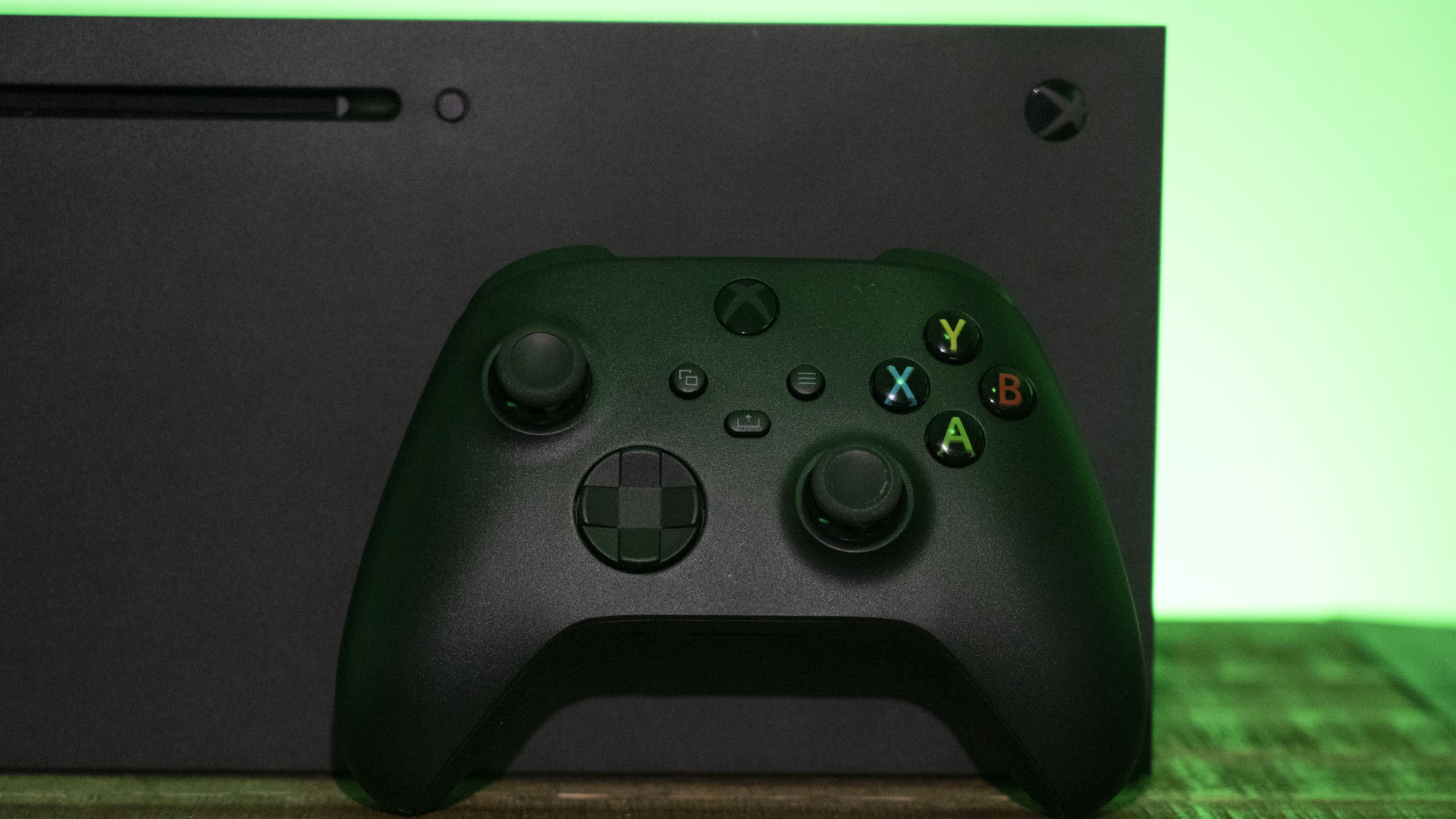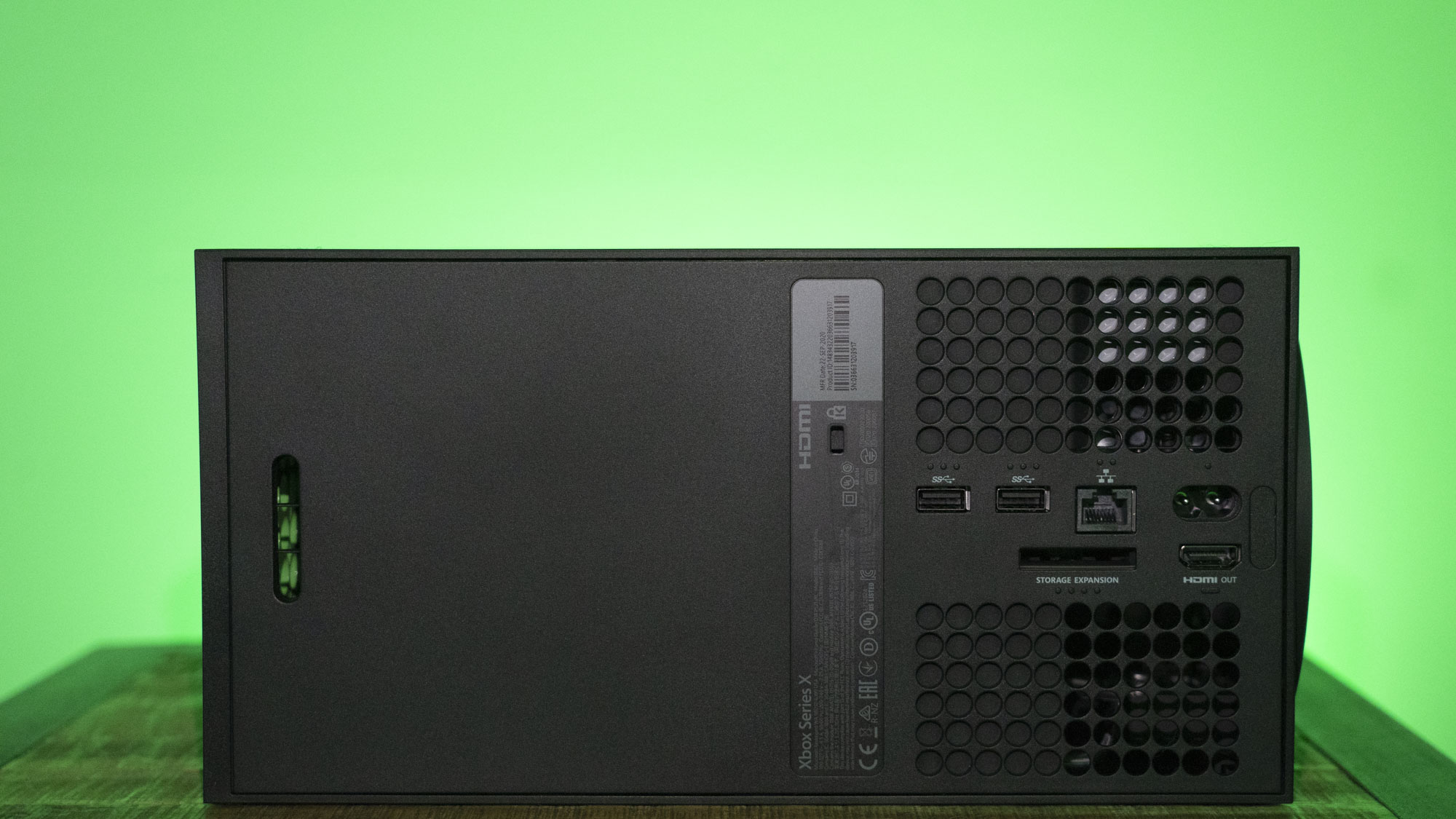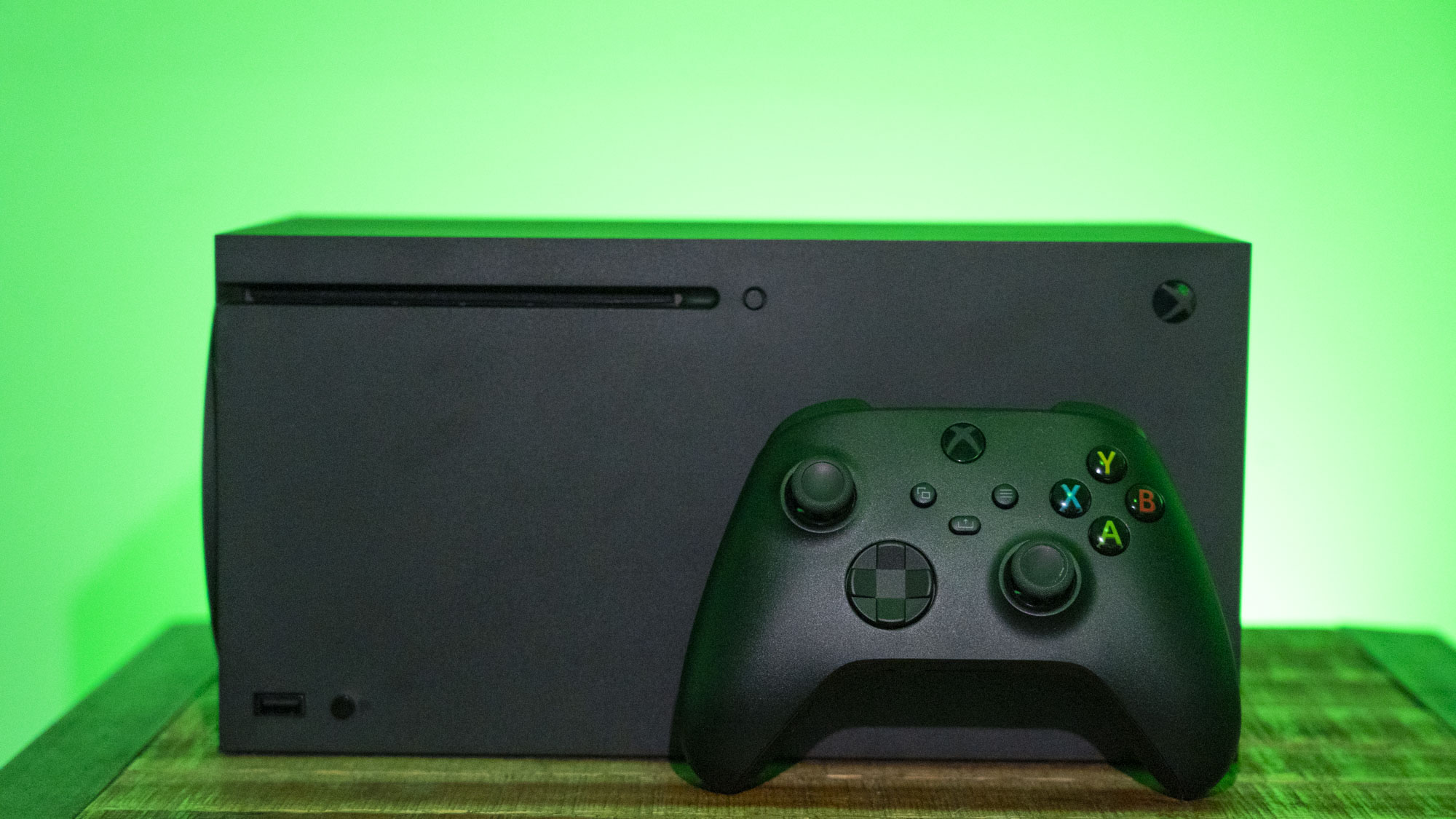In the late ‘90s, a group of Microsoft engineers started tinkering with old Dell laptops in the hopes of creating a console based on Microsoft’s DirectX technology. The idea was to create a gaming box that showcased what the software company was best at but without the need for a big honking PC running Windows. The engineers were kind of successful: The DirectX Box eventually became the Xbox, and when it launched, it was notable not just for its power and incredible graphics, but for its PC hardware guts.
I’ve been thinking about that a lot as I’ve covered the development of the Xbox Series X, because this system uses PC guts, too. It feels like a natural, and perhaps the most direct, descendent of that original beast of a machine. This is a showcase for what one of the biggest companies in tech can do when simplifying gaming for people who don’t want the cost or hassle of a PC. And I fucking love it.

Xbox Series X
What is it?
Microsoft's high-end next-gen console.
Price
$749
Like
Smart Delivery and Game Pass are game-changers. Quick resume is fantastic. It's quiet and plays the games.
No Like
Microsoft innovated with its Elite controller and brought none of those features to the X.
The Xbox Series X is the pricier of Microsoft’s two next-generation consoles. In materials supplied to reviewers, the company refers to them collectively as Xbox Series X|S. Let’s not get into how much more fun it would be to switch those two letters around and instead focus on these consoles. They’re more different than you would anticipate. The Series X is a lot larger, and that’s due to the built-in UHD Blu-Ray player, a 1TB custom SSD, and the powerful system-on-chip. The Series X has a custom 8-core 3.8 GHz AMD Zen 2 processor and a custom RDNA2 processor capable with 52 compute units (CUs) clocked 1.825 GHz and capable of 12 TFLOPS. It also sports 16GB of GDDR6 memory.
By comparison, the Xbox Series S has no disc player, a 512GB SSD, just 10GB of GDDR6 memory, and an 8-core 3.6Ghz custom Zen 2 processor with a custom RDNA2 processor with just 20 CUs at 1.565 GHz. It’s pretty wimpy by comparison, but also just $499 and a whole lot smaller. You can read my review of it here. If you’re going to buy one Xbox, save up that extra $250 and get the $749 Xbox Series X, because this thing is lovely.
It’s extraordinarily pragmatic in its design. While the Series S has some great pizazz with the big black exhaust ring front and centre, and the PS5 looks like Barclays Centre, the Series X is a big box that stacks easily and makes nary a sound (especially compared to the Xbox One X, or the jet engine-like Playstation 4 Pro). The only hint of some style is the green circle built into the primary vent for the console. It’s only visible at an angle, but its a nice little feature. As is the vent itself. However, be cautious with where you place the Series X or Series S. Both consoles put out a lot of heat with their vents. The vents themselves got up to 46 degrees Celsius and functioned as personally lovely little personal heaters when set behind my TV. If I put them in the cabinet under my TV I’ll be leaving the door of the cabinet open when they’re in use.
[related_content first=”1526499″]
While Sony has put its energy toward a new controller with fancy triggers and improved haptics for its PlayStation 5, Microsoft has focused on something that feels practically Apple in its ease of use. When you first power on the Xbox, it suggests you download the Xbox app and shows a unique code on-screen. Sign into the app on your phone, punch in the code, and the Xbox logs into your account, finds any settings you’ve previously had on other Xboxes, and connects to your Wi-Fi. It then immediately applies any necessary updates. Update aside, I was up and running in under three minutes.
But the Series X’s speed isn’t limited to the setup. Microsoft is using a custom SSD drive for storage and a whole lot of super-fast memory, which makes games start up fast. In regular usage, the Series X was usually ready to start playing before my TV had even finished powering on. Hopping into the game I’d been playing most recently took just seven seconds, whether that game was Gears 5, optimised for the Series X|S, or The Outer Worlds, which is merely compatible.
[related_content first=”1526508″]
Even niftier, I unplugged the Series X for about 36 hours to do some benchmarking and testing on the Series S. I was using the same plug for both so the Series X was without power, even a trickle charge, for 36 hours. Yet it still powered on and let me hop right back into my game immediately once I plugged it back in (though unplugging did nix the otherwise wonderful Quick Resume feature). That feature effectively saves your position in a game and lets you hop between games quickly without any of the long loading screens you’re used to seeing when booting up a game.
But cold booting games is fast, too. Gears 5 booted in 41 seconds, The Outer Worlds in 28, and Cuphead in just 13 seconds. By comparison, the Xbox One X booted Gears 5 in an excruciating 1 minute and 15 seconds, The Outer Worlds in 44 seconds, and Cuphead in 21 seconds. That’s about half the time to cold boot in each case. Level loads after a cold boot also saw their times drop, and in the case of The Outer Worlds and Gears 5, they loaded in a fifth of the time. That level load time you took to grab a drink or pet the dog is effectively gone.

And you had better be excited about that, because I’m pretty sure the days of generation-to-generation graphics improvements so stellar they’ll make your jaw drop are a thing of the past. The improvements to graphics, where available, were nice. Gears 5 is basically cranked to the Ultra version of the PC version of the game. The characters are more detailed than on both the Xbox One X and the Series S even in the lobby of the game. Once you’re in the game itself, things are still noticeably improved from the other versions.
There weren’t a lot of games available ahead of launch to test out (titles like Watch Dogs: Legion and Assassin’s Creed Vahalla won’t be available until Nov. 10), but they looked nice. Yakuza: Like a Dragon, Destiny 2, and Forza 4 Horizon all pop on screen. But the difference in quality from the previous generation is smaller than you might expect. If you’re constantly having to Google “does this game have ray tracing” to figure out if you’re seeing the future, things are nice but not spectacular. (None of the games available before launch have ray tracing.)
That will certainly change over time. Ray tracing only really became a tool in developers’ arsenals two years ago when Nvidia introduced its 2000-series GPUs. Yet most developers I’ve spoken with said they were waiting until consoles adopted the tech to start shipping games with it. That means games like Control, Battlefield 1, and the (presumably) upcoming Cyberpunk 2077 are the vanguard of the future, not the pinnacles of the technology.

Another thing those games have in common is that most of them aren’t available on Game Pass, which is truly one of the features I think that sets the Xbox apart from the PS5. The idea is you spend some cash each month and you get a big library of games spanning everything from the Xbox to the Series X|S, which you can play on your Xbox, your PC (if it’s powerful enough), and your phone. Game Pass works in conjunction with another nice Xbox-only feature, Smart Delivery. If you buy a Smart Delivery game on your Xbox you can play it on your PC and vice versa. While Sony has fought tooth and nail to avoid crossplay, Microsoft has avidly endorsed it, and while it’s clearly a financially motivated decision (they own two of the primary platforms for crossplay!) it’s also an extremely consumer-friendly one. Features like Game Pass and Smart Delivery just making gaming better, and I don’t think the cool haptics and much-ballyhooed storage on the PS5 will really compare.
In fact, there are only two places Sony can pull ahead and feel like the better console buy: exclusive games and the market they’re sold on. The new Xbox’s market is similar to the Xbox One’s, and it absolutely sucks at suggesting games to buy or clearly marking what games are and aren’t optimised for the Series X|S. Sony does a good job of suggesting the most discussed upcoming games or pulling from my previously played titles to entice me to splurge on an indie. The Microsoft Store showed me a lot of weird-looking indies that weren’t my cup of tea, and a lot of sports, which I have a severe allergy to.

As for figuring out which games are optimised and which aren’t, there’s no special section for optimised games, and searching is a real hit or miss. Microsoft does, however, list all the swanky features that make a Series X|S optimised title appealing. From high frame rates to HDR to 4K support, they’re all available for perusal…if you hunt for them in the game’s entry on the store. They’re not available if you call up the main card for a game.
But enough nitpicking about the store. Let’s chat about the elephant in the room: Right now, the Xbox has a handful of exclusives that are appealing, but it has nothing like Spider-Man or Uncharted or Horizon Zero Dawn or The Last of Us. Those games aren’t just good, they’re some of the best titles ever produced. The Xbox has…Halo, Forza, and Gears. They’re nice, but also remind me of my brother when he was in college and committed to backward baseball caps. Microsoft has been snapping up studios left and right, so it could turn things around on the exclusives front, but right now exclusives probably aren’t why you should buy this console.
And why should you buy it? Because it’s a lot more future-proof than the Series S, and has features that are far more appealing than the PlayStation 5’s. The Series S can’t do 4K 60Hz. It’s limited to 1440p…which no TV does. The Series X also supports 8K, though I doubt its 1TB drive will handle those games well if they ever ship. But the drive, which has about 800GB available for game storage, is still twice as large as the one in the Series S, and it plays optimised games at a noticeably higher quality. And as for the PlayStation 5, it’s got a neat controller and presumably faster storage, but no GamePass or Smart Delivery. If you’ve got $US400 ($559) and can only spend it on one console, then the Series X is the smarter choice. Microsoft learned to play nice a few years ago, and it applied that philosophy wonderfully to this console.
Xbox Series X: README
- It supports 4K 60 Hz HDR gameplay, with support for up to 120 Hz. It’s also got support for variable refresh rates, Dolby Vision, and 8K. Most of these things are still uncommon on most TVs, but it’s great that the option is there if you ever buy a new TV (buy a new TV, come on!).
- GamePass and Smart Delivery are wonderful.
- Quick Resume, and fast loading times overall, are the killer game feature of this generation. It’s that fast.
- The graphics are nice, but not the reason to upgrade.
